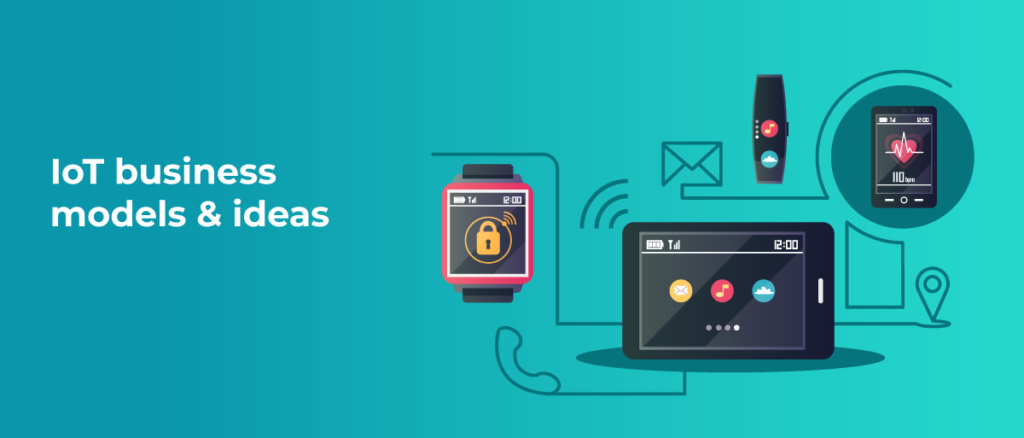IoT Business Models and Business Ideas

The Internet of Things has developed rapidly over the last decade both in terms of the available technology and the range of implementations across a wide range of business sectors. This growth trend looks like it will continue as connected devices become ever increasingly a part of our day to day lives.
The business world has been fast to take advantage of the new technology and we are seeing companies adapt their business models and in many cases invent completely new concepts to leverage IoT connected devices. These new IoT business ideas are helping companies generate new revenue streams, improve customer experience and retention, expand into new markets and increase the efficiency and much more.
We have collected a list of some of the IoT business models that we have seen hitting the market over the last few years.
Subscription Model
IoT connected devices add a completely new angle to the tried and true subscription model. An obvious example is the fitness industry. An example might be an IoT connected heart rate and step monitor being fed back into a subscription based fitness program that provides feedback, encouragement and reminders to help a consumer to reach their fitness goals faster.
One of the biggest challenges in subscription based business models is churn (customers leaving). By delivering continuous and meaningful feedback from data collected from a device, a business can greatly increase engagement and achieve a much stronger connection to their customers.
The Peloton Bike is one example. They offer a connected stationary bike with a monthly membership providing a range of classes to help you achieve your fitness goals.
Value add
Many businesses are adding connectivity to provide additional value to an already successful product. Again, this is common in the fitness industry. By connecting a device a manufacturer can create additional value for the consumer by delivering useful information and insights about the devices performance.
A good example of this type of business development is Polar. They are one of the worlds best known providers of heart rate monitors and fitness devices for athletes. They have built a free app that will connect to all of their products and deliver a sophisticated platform for measuring performance. This app is a point of difference against all of it’s competition and helps to built brand loyalty.
Asset sharing
The idea of sharing an asset becomes easily manageable if the asset is monitored via an IoT platform. We are seeing this in the transport industry. One very obvious example are the urban e-scooters that are becoming a standard part of most cities. Tier is one example.
This model allows a customer to drive any scooter that they find and pay via credit card based on the distance that the customer travels. They simply need to sign up by downloading and registering in an app. The connected device (in this case the scooter), reports it’s movements and battery condition to a central IoT platform which allows the provider to bill the customer and monitor all of it’s vehicles. It also provides customers with a map showing the locations of each available scooter as well as the battery charge level of each.
The “refill” Model
This model can easily be explained by an example. Imagine a printer that automatically orders new ink every time one of the cartridges starts to run low. This could work for a razor, a gas tank on a BBQ, a CO2 tank in a soda stream and a huge range of other consumable products.
Amazon has already made a big move in this area with it’s Dash Replenishment Service. This software can be integrated into your product and will automatically re-order consumables from Amazon as they are required.
Remote control and monitoring
In large industrial plants sensors and controllers are being used more and more to help manage the processes that run within a factory. This is mainly to predict maintenance and to optimise the output of the plant by improving the processes within it. But on a smaller scale, there is a growing number of products that are providing consumers a similar level of control over their own properties and assets. A very common example of this is in home automation. There is already a wide range of products on the market including: security devices, thermostats, smoke detectors, locks, sprinklers, lights and much more. A connected home allows owners to monitor the house while away as well as to control a range of systems.
The products business model here relies on an IoT connected device and a platform that the consumer can use to manage it, often with a mobile app. Samsung is one of many large manufacturers that are moving in this direction with their Smart Things range of products.
Outcome based models
IoT allows a producer to monitor the performance of a product after it has been sold and delivered. For example, a leasing car might be charged by the kilometer, rather than monthly. A water pump could be charged on a per lite pumped basis. An air filter could be charged on a price per cubic meter of air cleaned.
This model is already being used in some areas, such as large office printers, which often include maintenance and charge based on the number of pages printed per month. By connecting devices to the internet, monitoring becomes much easier and can be automated.
Are you developing an IoT business idea?
The Internet of Things is opening up a huge range of possibilities for companies of all sizes. The larger players like Amazon and Samsung are already moving fast, but there are plenty of gaps and niches where an innovative idea can find success.
Macchina Remote Manager offers you a fast track to getting a new IoT business off the ground. You can sign up and test it for free. Connect your first device today!
